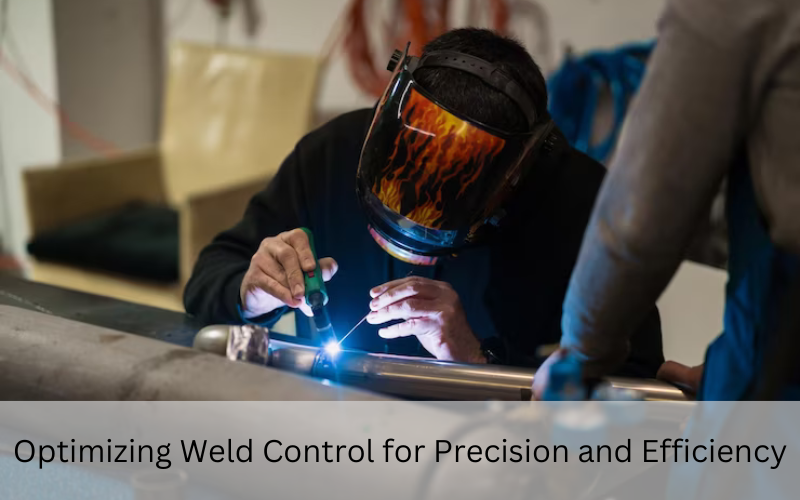
In manufacturing and construction, welding is a fundamental process that binds metals together. It’s the cornerstone of building structures, automobiles, and everyday appliances. However, achieving precision and efficiency in welding can be a challenging task. This post will delve into optimizing weld control to ensure your welding processes are efficient and precise. We’ll explore techniques, tools, and strategies that can significantly impact your welding operations.
Weld control plays a crucial role in ensuring the quality and durability of welded joints. It directly impacts weld bead size, penetration, and heat input. Whether working on a massive construction project or a delicate piece of machinery, achieving the desired weld quality is paramount.
Precision in welding is essential because it determines the accuracy of the weld. A precise weld ensures the intended design specifications are met, reducing the need for costly rework or repairs.
Efficiency is equally essential, as it directly affects production costs. An efficient welding process saves time, energy, and resources, ultimately contributing to a more competitive edge in the industry.
Selecting the appropriate welding process is the first step in optimizing weld control. Different welding methods offer various advantages and disadvantages. Choosing the one that best suits your project’s requirements is crucial.
GMAW, commonly known as MIG welding, is known for its versatility and ease of use. It’s suitable for various materials and thicknesses, making it a popular choice in various industries.
SMAW, or stick welding, is known for its reliability and ability to work in adverse conditions. It’s an excellent choice for outdoor welding projects.
TIG welding offers exceptional precision and control. It’s ideal for projects where aesthetics and quality are top priorities.
SAW is a high-productivity welding method that excels in joining thick materials. It’s commonly used in heavy industrial applications.
Besides choosing the right welding process, having the appropriate equipment and technology is crucial for optimizing weld control.
Investing in high-quality welding machines with advanced controls and settings allows for better adjustment and precision during welding.
Automation technologies, such as robotic welding systems, can significantly improve precision and efficiency in welding operations.
Utilizing weld monitoring systems provides real-time data on the welding process, allowing for immediate adjustments to ensure optimal results.
Precision truly comes into play by controlling welding parameters and settings. Understanding and fine-tuning these factors can make a world of difference.
Adjusting voltage and amperage settings is crucial for controlling heat input and achieving the desired weld bead size and penetration.
The speed at which the welding torch moves along the joint affects the weld’s quality and efficiency. Finding the right balance is critical.
Choosing the appropriate electrode and filler metal for the specific project material is essential for achieving a strong and precise weld.
Welding is not just about equipment and settings; it’s also about the welder’s skill. Investing in training and skill development is vital for optimizing weld controller.
Ensuring welders are certified and well-trained in the chosen welding process is essential for achieving consistent and high-quality results.
The welding field is constantly evolving, with new technologies and techniques emerging. Encouraging welders to engage in continuous learning helps keep our welding processes up-to-date.
Quality control and inspection processes must be in place to maintain precision and efficiency in welding.
Non-destructive testing (NDT) techniques like ultrasonic and radiographic examinations can identify flaws in welds without causing harm to the workpiece.
Regular visual inspections by trained professionals can catch surface imperfections and other issues early on.
In conclusion, optimizing weld control for precision and efficiency is a multifaceted process involving choosing the proper welding process, utilizing the latest equipment and technology, fine-tuning welding parameters, investing in training and skill development, implementing quality control measures, and addressing challenges in different environments. It would be best to contact Proteus Industries Inc. Remember, weld control is not just a technicality; it’s the backbone of successful welding projects.